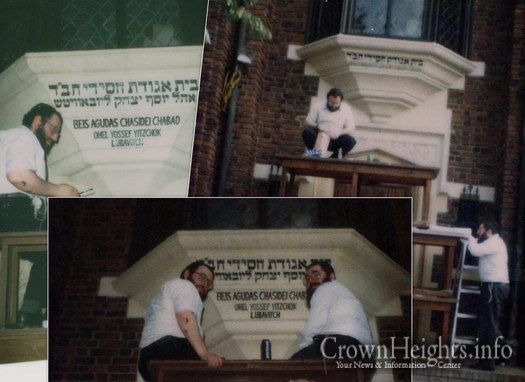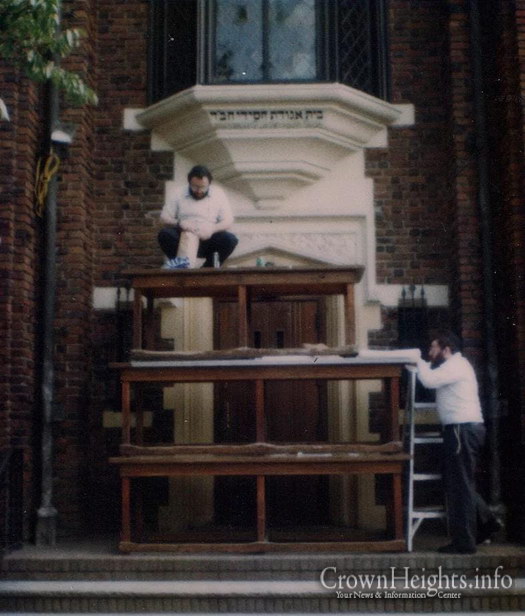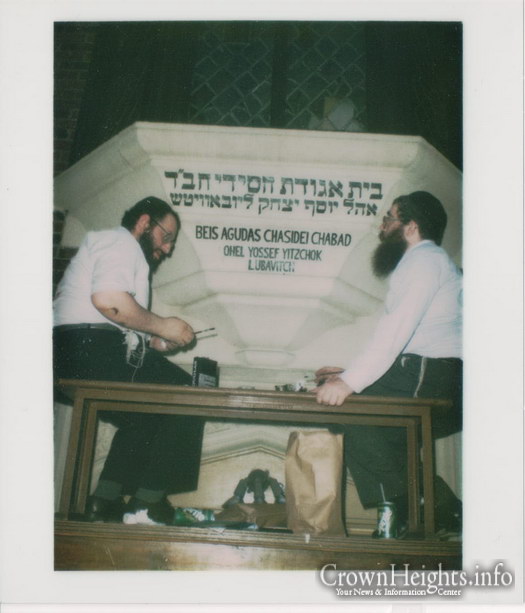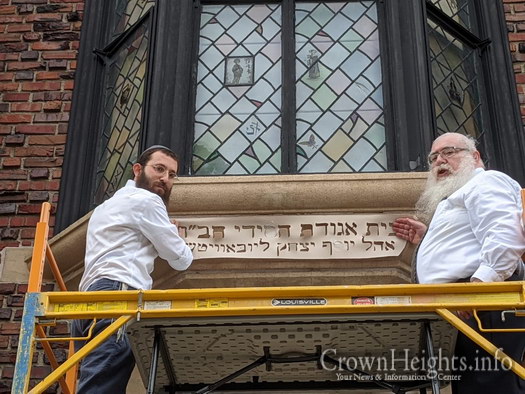
The History Behind The 770 Inscription
by CrownHeights.info
On Yud Beis Tammuz תשמ”ה, as the episode of the stolen sefarim from the Library of Agudas Chassidei Chabad was going on, the Rebbe addressed the situation publicly for the first time. During his address, he announced the decision to add the name Ohel Yosef Yitzchak to the 770 building.
Two days later, on the 14th of Tammuz, the Rebbe gave instructions to place the name on the outside of the building, making it more official in the US culture. Three people took on the task of creating and painting the inscription, Rabbi Shalom Jacobson obm, Rabbi Levi Sudak, and Rabbi Chaim Baruch Halberstam.
The three drew some examples for the Rebbe’s approval on a photograph made with an instant developing film, to which the Rebbe chose one of the versions.
The Rebbe instructed the three to immediately paint the inscription so that it should be done before he returns from the Ohel.
The three set to work, piling tables on top of each other to create a platform from which to paint above the door.
Upon returning from the Ohel, the Rebbe saw the newly painted inscription and approved, giving just one correction.
The name Lubavitch spelled out in English appeared too cramped in the limited space.
In תשנ”א, when the inscription was being rehabbed, they took the correction and rewrote the name Lubavitch on a separate line.
















